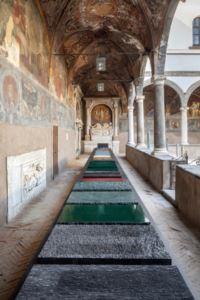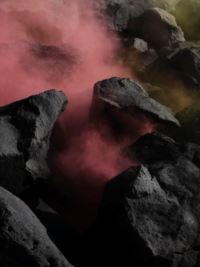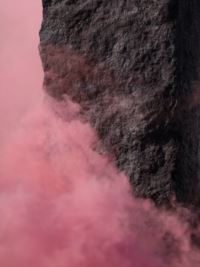For centuries, Lavastone has constituted the bedrock of Italian architecture, not only because of its resistance and aesthetic versatility but also because of the cultural reasons that underpin this volcanic material. From timeless elegance to a resistant structure, here is why. Ranieri Lavastone is proud to present a wide product range: natural and glazed Lavastone tiles, countertops, sinks, and 3D tiles that immensely enrich any traditional or modern interior. Below is the origin, historical meaning, and contemporary use of Lavastone in Italy, underlining how it has kept its position to shape the face of luxury architecture and design.
- Blog
- Cultural Significance of Lavastone in Italian Architect
Cultural Significance of Lavastone in Italian Architect
Table of contents


Roots in Antiquity: Lavastone in Ancient Italian Buildings
History reports that Lavastone dates way back to ancient times in Italy when volcanic activities took place to shape its geography and cultured features. As a matter of fact, it was so strong and also resisted weather conditions; hence, the ancient Romans used it in aqueducts, on the road, and even while constructing amphitheaters. These stones were very important in the public infrastructural setting and formed a stepping stone to its application in later architectural eras. Already by the 13th century, this peculiar feature of Lavastone became increasingly used by the Italian masons in important works such as fortification castles, bridges, and cathedrals. Its use was further propelled since it was locally sourced and more recyclable, especially in regions where volcanic eruptions were frequent, like Naples and Sicily. Additionally, its dark and rough appearance corresponded very well to the Gothic style prevailing in those times. The Renaissance finally adopted Lavastone in the 15th century, when its use was not limited to tectonic but also ornamental purposes. The artisans gave Lavastone incredibly eloquent details, decorating façades, fountains, and monuments of religious character. This is how both the qualities of force and beauty combine in Lavastone, thus connecting it with art in 14th-century Italy as the sign of eternal creativeness.
Symbolism: Lavastone in Cultural Narratives
Lavastone is not just a construction material but a metaphor for change and resistance. It testifies to the changing power of nature, restoring and creating beauty from chaos—a metaphor that could hardly find a more fertile ground than in Italian culture. Traditionally, Lavastone served as a material for sacral objects such as altars and baptismal fonts, a symbol of purity and eternity. Its origin in durability made it naturally appropriate for monuments and memorials, embedding it within Italian spiritual and cultural self consciousness.

Geographical Influence: The Regional Varieties of Italian Lavastone
Italian volcanic regions contain several Lavastone types, differentiated according to their characteristic features. Among the most valuable quarries are on Mount Etna in Sicily, Mount Vesuvius near Naples, and the Aeolian Islands, with diverse textures, colors, and densities. For example, Sicilian Lavastone is richly colored gray, and the compact fineness of the grain provides the minute details of a carving or decoration. The Lavastones coming out of Vesuvius can have a far coarser, porous structure that fits well in rustic and industrial aesthetics.
Lavastone in Italian Landmarks: Case Studies
It's hard to think of anything that's more iconically Italian, from the Renaissance onwards, than Lavastone. The character of Catania's streets-mostly known as the "Black City"-owes its character to the Lavastone that comes from Mount Etna and paves its streets. Lavastone is also used in most of the building works in historic sites like Castel dell'Ovo and Castel Nuovo in Naples and has resisted wear and tear for many centuries, still standing in awe. These symbolic and functional qualities have also been incorporated into modern landmarks with the use of Lavastone. It is used in public spaces, luxury hotels, and villas for flooring, facades, and decoration, hence finding its place in modern Italian architecture.
FAQ
What is the significance of the lava stone?
This is an important material architecturally and culturally for its durability, natural beauty, and historic relevance. Its properties of resistance to heat and weather and wear and tear of time favor its use in durable structures. It is symbolic of transformation and strength, echoing its volcanic origin. Its luxurious nature evokes functionality by marrying timeless elegance with design.
What is lava rock used for spiritually?
Lava rock is a spiritual stone believed to provide enormous stability and strength. The culture takes it as a sign of renewal mainly because it originates from molten lava. It is believed to absorb negative energy, hence enhancing emotional stability. Thus, it is used in meditation and healing.
What is a Basaltina stone?
Generally, Basaltina belongs to the large family of Lavastones, featuring a regular structure and dark gray color. Put all these aspects together; it will be one of the most requested stones for high-quality architectural applications like flooring, wall cladding, and countertops. Undeniably, its aesthetic versatility, allied to strength, made it one of the favorites of modern luxury design.
Conclusion
From infrastructural uses in ancient times to the prominence of luxury design today, Lavastone has carved out Italy's architectural and cultural identity through the ages. Its permanent appeal flashes out through unrivaled durability, aesthetic versatility, and symbolic depth. Following the centurial tradition, Ranieri Lavastone produces quality Lavastone products for modern applications, from natural and glazed tiles to custom countertops, including furniture pieces, that show the timeless beauty and transformation capability of Lavastone in architecture and design. From volcanic origin to luxury interior, the path Lavastone has traced reflects the patience of art in Italian craftsmanship and hence stands for architectural excellence.